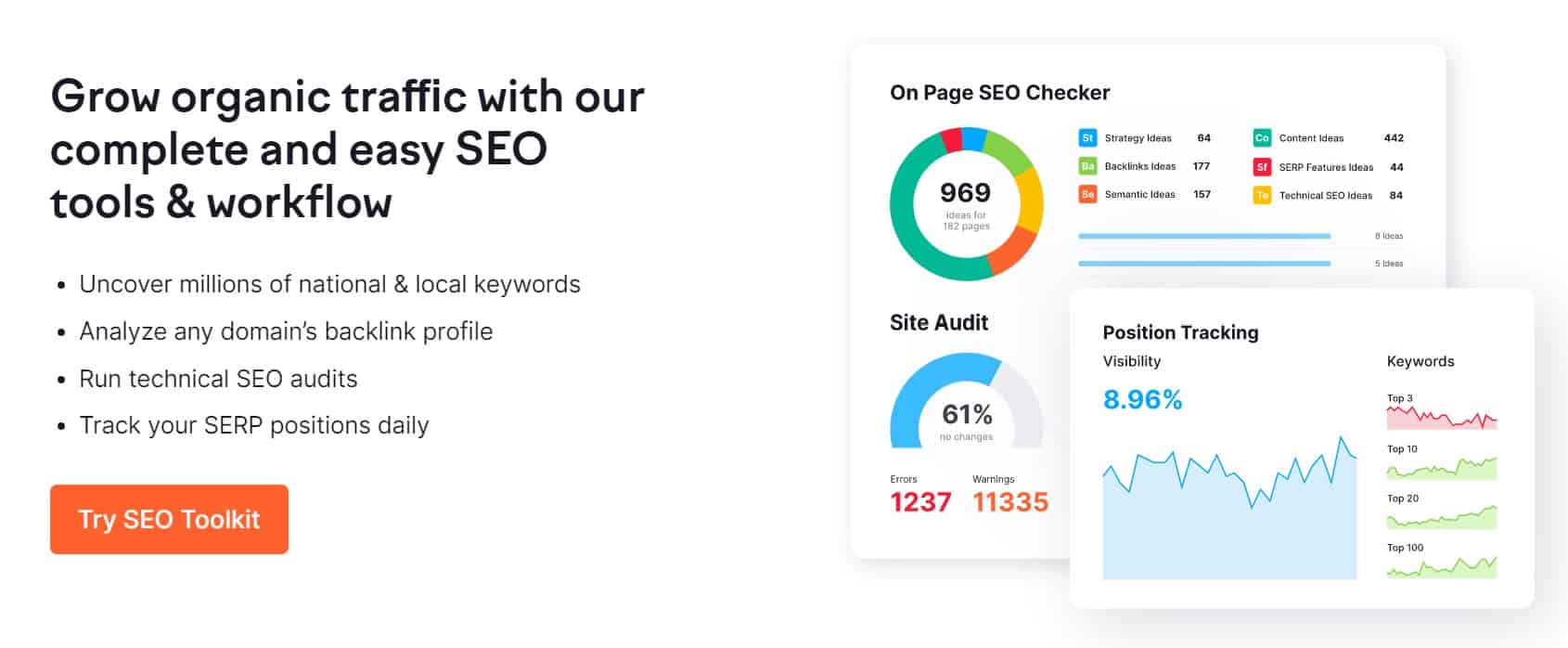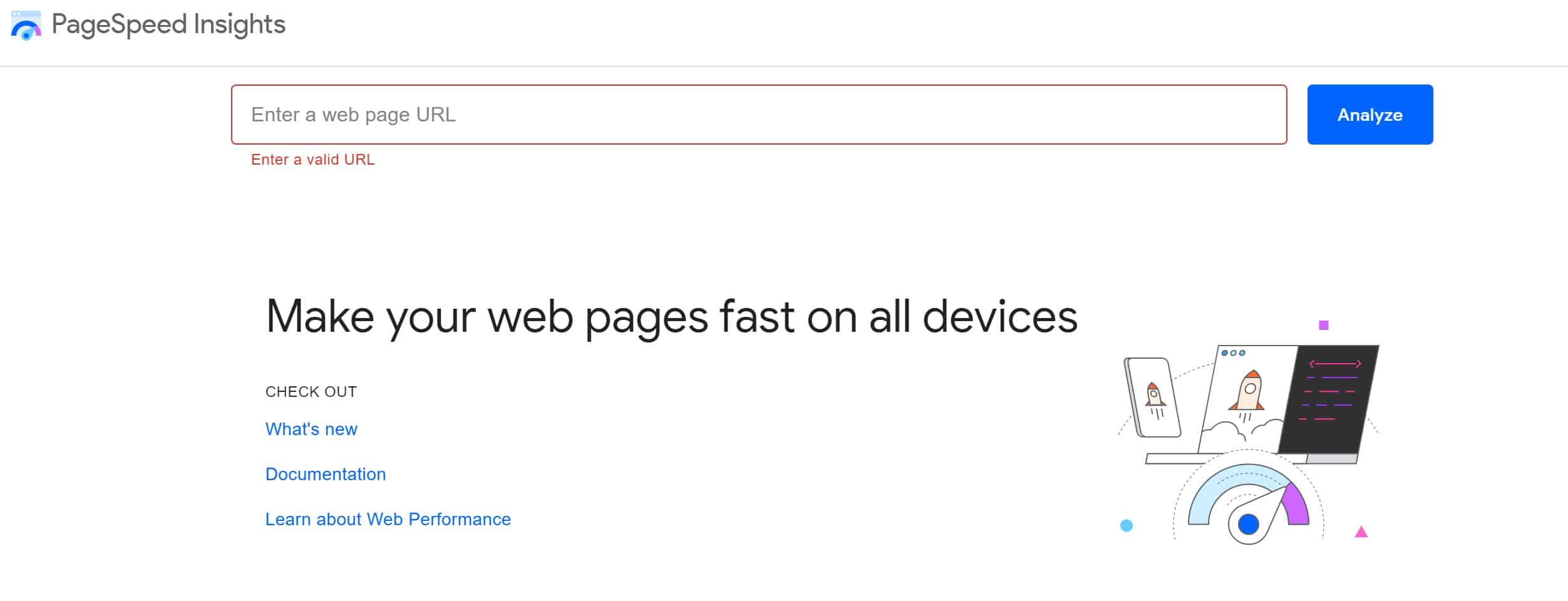Keyword Strategy to Rank #1 in Google for Competitive Keywords
If you’re asking yourself, “How do I identify competitive keywords?” you’ve come to the right place.
To fully dive into this topic, we’ll need to address what a competitive keyword is, how to put together a keyword strategy, and a few tools that will help you along the way.
Let’s get started.
How Do You Find Competitive Keywords?
Competitive keywords are those that are difficult to rank at #1 in the search engine results pages (SERPs).
For example, “car insurance” is an extremely competitive keyword. Lots of folks are trying to put that one at the top.
But who gets the top spot?
You’ll often find that established brands that optimized for competitive keywords a long time ago get to keep their top spots in the results pages.
So how do you identify a competitive keyword?
That’s where some of the more popular digital marketing tools are your best friends. Services such as SEMRush and Ahrefs will tell you in a jiffy how difficult it can be to rank a specific keyword.
So if you’re still looking for a reason to invest in one of those tools, that might be a good one.
Step 1: Review Top Content
Okay, now that I’ve covered the basics, let’s take a look at how to rank #1.
For starters, stick with that Google tool. Type in your keyword and check out the top three pieces of content.
Click on each of those links. This is the part where you’re sizing up your competition.
Pay attention to the type of content you see there. Are those articles listicles? News articles? Guides? FAQs? Videos?
Look for patterns. If you see that certain types of content tend to rank well for that search term, then you might want to use that type of content yourself.
Step 2: Use Your Tools (Again)
For this part, you’re going to have to invest in a tool like SEMRush or Ahrefs.
Drop the URLs of those top three pieces of content that you identified earlier into your favorite tool.
Then, start taking notes on the stats you find.
Pay attention to the number of backlinks pointing to those pages. You might need a similar backlink profile if you want to rank as well.
Also, take a look at the domains where those pieces of content are hosted. Are they already high-ranking domains? If so, then you may face an uphill climb if your domain isn’t recognized as an authority on the keyword.
But all is not lost. You can make up for a weak backlink profile with outstanding content. More on that in a bit.
Use PageSpeed Insights
Next, use Google’s PageSpeedInsights to check out the user-friendliness of the articles you identified earlier.
If you’re unfamiliar with PageSpeedInsights, it’s a tool that gives you Core Web Vitals data for a specific web page. Core Web Vitals stats measure things like how quickly the page loads and how much it shifts while loading.
The point here is this: you might stumble across some pages that rank #1 for a search term, but their Core Web Vitals scores are awful.
That’s called “opportunity.”
Just make sure that the Core Web Vitals scores of your own pages are much better.
Fortunately, Google tells you how to improve the scores right there on PageSpeedInsights.
Step 3: Create Better Content
This one is easier said than done.
Now that you have all the info you need about competing pages, it’s time to create content that’s better than what you’ve found online.
Remember: your goal here is to write something that’s valuable to your readers. If you’re engaged in an effort of keyword-stuffing or writing a painfully obvious sales pitch right out of the gate, you’ll fail.
And by the way, Googlebot is very smart these days. It will pick up on whether or not your content offers value to its readers.
So there’s no point in trying to take any shortcuts here. You’re going to need to produce long-form content that resonates with your target audience.
If you’re not good at that, then you’ll need to fork over some cash for a professional writer. Fortunately, there are plenty of them available online.
Take full advantage of the creatives available to you at this point in the 21st century. Add videos, images, animated GIFs, infographics, audio embeds, and whatever else you can think of that helps get the point across.
Again: Google will pick up on the fact that you’re going out of your way to reach people with quality content. And Google will reward you for that effort.
Step 4: Continue Creating Content
Once you’ve created some great content that competes with top-ranking web pages for your keyword, your next mission is to keep doing it.
In other words, keep cranking out the awesome content.
Sure, you might get to the top of the SERPs with just one great article. But remember: you want to boost your overall domain authority for that subject as well.
And to do that, you’ll need to keep on keeping on.
So get yourself a content calendar and keep on pushing out that amazing work.
Step 5: Build Backlinks
Next up: get some backlinks.
This is where things get tricky because you’re technically in black hat territory when you solicit backlinks.
The solution to that: create content so awesome that people want to link to it without you even asking them.
Step 6: Update Old Content
It’s very likely that your content will go out-of-date or “stale” after a year or so.
In that case, you’ll need to update the content with fresh details, stats, and multimedia embeds.
How often you need to do that depends on the type of content and how quickly it becomes old. The important takeaway here is that you make sure your content never leads anybody astray.
Wrapping It Up
Yes, you too can rank at the top of the SERPs for competitive keywords.
Just make sure you know what you’re up against with some preliminary research. Then produce content that’s better than anything online.
And check your rankings regularly.
Welcome To John Lincoln Marketing
Welcome to John Lincoln’s personal website. You can learn about John Lincoln’s books, films, book him to speak and contact him. John is directly associated with many of the businesses mentioned on this website and freely discloses this information.
About the Author

John Lincoln is CEO of Ignite Visibility, one of the top digital marketing agencies in the nation. Ignite Visibility is a 6x Inc. 5,000 company. Ignite Visibility offers a unique digital marketing program tied directly to ROI with a focus on using SEO, social media, paid media, CRO, email and PR to achieve results. Outside of Ignite Visibility, Lincoln is a frequent speaker and author of the books Advolution, Digital Influencer and The Forecaster Method. Lincoln is consistently named one of the top digital marketers in the industry and was the recipient of the coveted Search Engine Land “Search Marketer of The Year” award. Lincoln has taught digital marketing and Web Analytics at the University of California San Diego since 2010, has been named as one of San Diego’s most admired CEO’s and a top business leader under 40. Lincoln has also made “SEO: The Movie” and “Social Media Marketing: The Movie.” His business mission is to help others through digital marketing.
Get Social
Contact John Lincoln
Want to get in touch with John Lincoln? Click Here To Reach Out.
Related Posts

Top 16 Questions to Ask a PPC Company in 2024
In 2024, choosing the right PPC company is not just about spending your advertising budget. You want to make every cent count towards your business

The Ultimate Guide to Conversion Rate Optimization for Any Business
Whether you’re a seasoned marketer or just starting out, conversion rate optimization (CRO) is a powerful tool that can boost your sales, leads, and overall

16 Questions to Help You Choose an SEO Company
Feeling overwhelmed by the sea of SEO companies out there? You’re not alone! Choosing the right partner is crucial for achieving your online marketing




